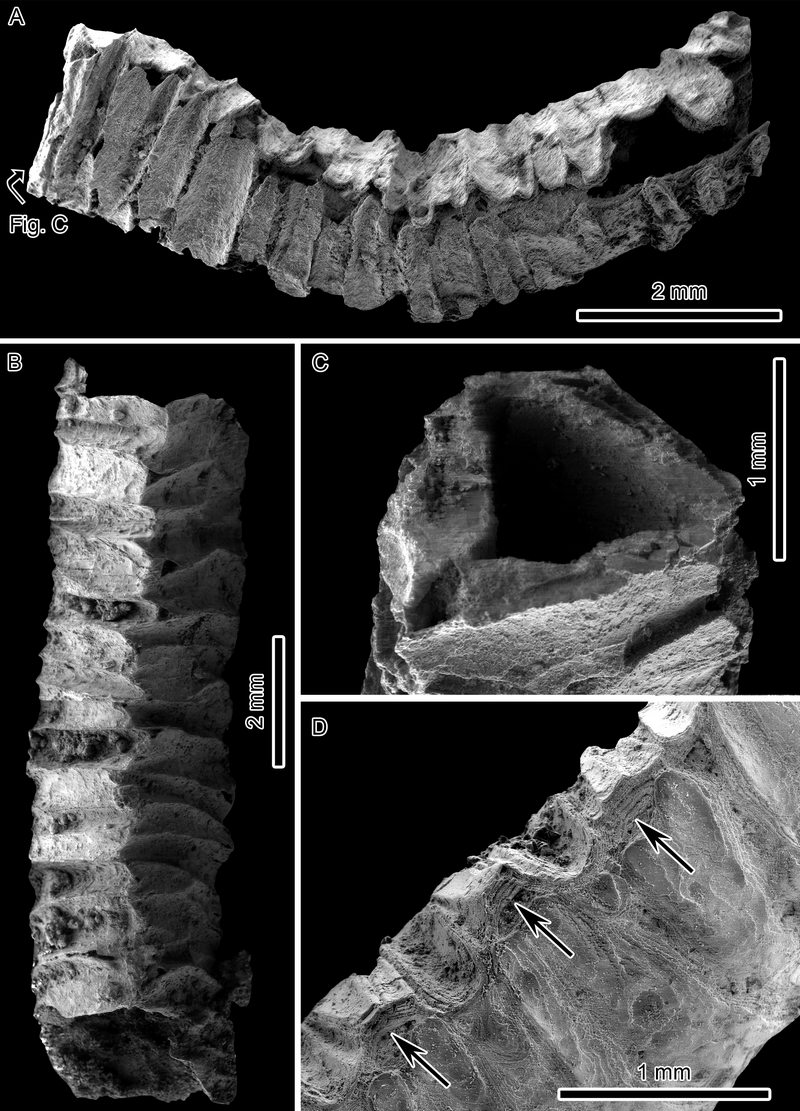Sinotubulites is a late Ediacaran biomineralizing tubular fossil with a probable animal affinity. It was first reported from the late Ediacaran Dengying Formation in the Three Gorges area, Hubei Province, South China. Subsequently increased fossil localities—including USA, Mexico, and recently central Spain—indicate that it has a worldwide geographic range, thus playing a significant role in intercontinental stratigraphic subdivision and correlation of late Ediacaran successions. As such, Sinotubulites would be served as another potential index fossil other than the coeval index fossil Cloudina.
The poor preservational resolution of Sinotubulites specimens significantly limited a full morphological reconstruction and taxonomic disparity on this important taxon. Nonetheless, three dimensionally preserved Sinotubulites through authigenic phosphatization from the late Ediacaran Dengying Formation in southern Shaanxi Province, South China allows a more detailed paleobiological investigation.
Recently, CAI Yaoping, a postdoctoral fellow at Nanjing Institute of Geology and Palaeontology, Chinese Academy of Sciences and his colleagues have documented a systematic study on Sinotubulites. The majority of previously published Sinotubulites species are considered as synonymous with the type species: S. baimatuoensis. Three new species—S. triangularis n. sp., S. pentacarinalis n. sp., and S. hexagonus n. sp.—are reported from the late Ediacaran Beiwan Member of the Dengying Formation in southern Shaanxi Province, South China. The three new species are similar to the type species in having nested, multilayered inner and outer tube walls. However, they are different in their polygonal cross sections and longitudinal ridges. S. baimatuoensis is more or less circular in cross section and lack longitudinal ridges on the outer tube wall, whereas S. triangularis, S. pentacarinalis, and S. hexagonus are respectively triangular, pentagonal, and hexagonal in cross section with three, five, and six longitudinal ridges on the exterior surface of the outer wall. The new material adds to the diversity of late Ediacaran biomineralizing animals. The triradial, pentaradial, and hexaradial tubes of S. triangularis, S. pentacarinalis, and S. hexagonus share some intriguing similarities in body symmetry with several early Cambrian tubular fossils, although these Cambrian tubes are not open at both ends. Still, it would be interesting to explore the tantalizing possibility of evolutionary continuity of triradial, pentaradial, and hexaradial tubular animals across the Precambrian–Cambrian boundary.
Related information of this paper: Cai, Y., Xiao, S., Hua, H., Yuan, X., 2015. New material of the biomineralizing tubular fossil Sinotubulites from the late Ediacaran Dengying Formation, South China. Precambrian Research, 261(C), 12-24.

Schematic diagram showing morphological reconstruction of the four species of Sinotubulites

New species Sinotubulites triangularis showing triradial symmetry

New species Sinotubulites pentacarinalis showing pentaradial symmetry
